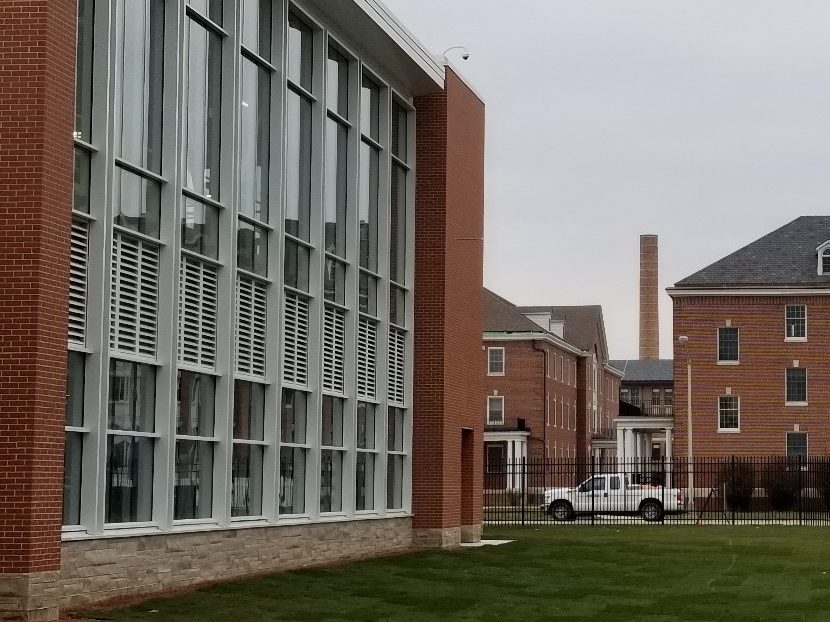VA Work To Be Proud Of
Massive flooding and damage to this Hines, Ill., VA hospital required a redesigned — and relocated — boiler plant.

Working for the Veterans Administration (VA) can be extremely rewarding. Over my 10-year career, I have worked on dozens of VA projects and even though they have their challenges, there is something about them that makes them a little more special.
In 2009, my company, HGA, contracted with the VA to do a study of the existing power plant at the Edward Hines Jr. VA Hospital in Hines, Ill., and to make a recommendation on how to move forward. Nine years and 242 drawings later, we are scheduled to complete the project this spring. I want to share with you some of the highlights and challenges of the process because this project pretty much had it all.
The Flood of 2010
Our team was finishing up with the original engineering study for the existing boiler plant when, in 2010, the Des Plaines River flooded its riverbanks. The massive flood took out the existing boiler plant, which knocked out the campus and required a portable replacement plant to be set up with emergency funds.
The flood exposed a major flaw of building a boiler plant below grade; a vulnerability that the VA specifically prohibits in its current design criteria. The campus stormwater weaknesses were remedied with major system improvements and emergency pumping solutions.
The flooded plant was drained and the existing systems repaired to allow the campus to remain operational until a new plant could be designed and constructed. The next step was to design a quality, cost-effective solution for this campus to provide health care to our veterans for another 50 years.
New Plant Needed
After the flood and the feasibility study demonstrated to VA leadership that there was an obvious need for a new boiler plant, HGA began design efforts for the new plant on campus. This task proved to be extremely challenging and one that is still a challenge today. If you think about a boiler plant and the simple tasks that it faces, you can sum it up with this statement: The boiler plant is the heart of a campus. Without the heart, the campus cannot survive.
Our team was tasked with adding a new heart (on the other side of campus) while the existing heart remains operational. Other things to consider were the overall campus master plan, historical preservation, reconnecting campus infrastructure, noise, physical security and campus aesthetics. Our design process required a lot of collaboration with VA leadership, which included some amazing plant operators that brought to the table great ideas from their years working in the plant and the Navy.
We analyzed several plant options and locations on the campus using an engineering owners’ project requirements strategy to make sure we were getting buy-in from the entire VA organization. We even met with national VA leaders in Washington to make sure our team was heading down the right path. With the integration of the VA and our design team, we were able to complete our first design in October 2013.
Plumbing Highlights
The existing boiler plant housed the water service for the entire Hines VA campus. Moving these components was extremely challenging and required us to rework the entire campus water distribution system. The 80-year-old, 12 in. transmission main feeding the existing boiler plant also was failing, so it made sense for us to move that service to the other side of the campus with the new plant.
As with any system rework, unintended consequences occur. The relocation of the water service also required us to design a 1.25-million-gal. reservoir to replace the hospital’s existing 750,000-gal. underground tank. The new reservoir size was a balance of water safety, resiliency and the VA’s physical security requirements. Along with the new water service came a triplex booster pump solution capable of pumping 1,500 gal./minute.
This all connects to a complicated water distribution network with a million-gallon water tower and connections to nearby Loyola and Madden neighbors. The design also includes 6,000 gal. of RO storage for boiler makeup water.
In addition to the campus water service, we also were relocating the domestic hot water source from the west side of the campus. We used a heat recovery system that took advantage of the waste heat from the steam boilers to preheat the domestic water. We sent 100 gal./minute of hot water across campus to back-feed what was originally sourced from water heaters, saving the VA energy and money.
Redesign is Necessary
After years of budgeting and getting an understanding of what this project would cost, the VA and our team were faced with the challenge of reducing the project costs by approximately $10 million. In our original design, the intent was to have a walkable steam and condensate tunnel with space reserved for a future chilled water loop so the plant operators could essentially follow the distribution throughout the campus.
This was, unfortunately, the biggest redesign change to the project to meet the $10 million cost savings to the project. Changing the walkable tunnel to box conduit wasn’t quite enough, though. For those of you who work on VA projects, you know they set up their bid documents to include deductive alternates. Essentially, you design the facility to include opportunities for cost savings. It is very challenging on a boiler plant project to pick and choose things deemed “not needed” because of the inherent essentials that go along with a boiler plant.
We came up with about 15 or so items to reduce the overall project budget. This alternate deductive list was a challenge because you had to take the alternate list in ascending order, according to VA rules. So we wanted to put the least painful items toward the top and the least desirable alternates at the end. Overall, the redesign and funding process took a little over a year and HGA re-issued the drawings in March 2015.
Construction
The general contractor on the project was Chicago-based Walsh Construction and the mechanical contractor doing a lot of the heavy lifting was awarded to Mechanical Inc., Freeport, Ill. Due to the size and complexity of the project, the VA used the U.S. Army Corps of Engineers to assist with the project during construction. Construction officially began in 2016 and is scheduled to be completed this spring with the decommissioning and demolition of the existing boiler plant.
The design and construction teams have been working through the trials and tribulations of getting a new boiler plant up and running with the transition from old to new, revealing complexities and infrastructure challenges along the way. Our teams have come together for the common good of what this new boiler plant is going to mean to the veterans of the Chicago area.
I have never served in the armed forces but I am proud to have worked on many VA projects over my career. Knowing what the men and women of our country have sacrificed, why wouldn’t we want to give them the best health-care facilities our country can provide?





